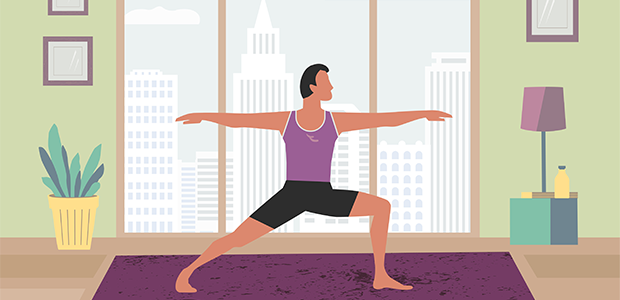
Beating the January Blues with exercise
The January Blues have been present in general discourse for some time. Low mood, lower energy levels and feelings of irritability are experienced by many of us throughout the winter and January following the high of the holiday season.
There are many probable causes such as the post-holiday slump which may include saying goodbye to friends and family who live far away or having fewer exciting events to look forward to.
The blues can be facilitated, or compounded by, financial pressures exacerbated by the pressures of gifting or hosting expensive parties. Finally, in the Northern Hemisphere, we experience considerably fewer sunshine hours with cold and dark days omnipresent in some areas.
It is important to highlight that the Winter or January Blues are different to the more serious condition of Seasonal Affective Disorder (SAD), a clinical diagnosis of mental ill-health. This is directly related to shorter daylight hours. While exercise may be a tool for recovery for those experiencing SAD, this article focuses solely on the benefits of exercise in assisting your efforts in beating the blues this winter.
The benefits of exercise on our physical and mental wellbeing are well established. Physical activity reduces our risk of numerous chronic diseases such as heart disease, cancer, and depression. Sleep, energy, mood, and self-esteem are all positively impacted by physical activity which already begins to paint the picture of why it is such a valuable tool for beating the blues.
Furthermore, exercise can be entirely free of cost, a major benefit for those experiencing the blues due to financial pressures. While equipment, clothing, and gym memberships can quickly add up, the outdoors or a home workout viewing free content, is always accessible for those on a low budget.
A sense of achievement and overcoming inertia will add to the mood-boosting factors of exercise. For many of us, January is a time to check in with our needs, current fitness levels, and overall goals. Going through this process, and most importantly, taking action will enable us to benefit from the motivating factors of goal attainment.
Getting started and adhering to new exercise can be difficult and while exercising itself is straight forward and accessible, behaviour change can be a challenge. It is important to set ourselves up for success with sustainable efforts taking precedence over overnight change.
1. Assess baseline: Where are you starting from and what is your current level of fitness?
If you’re a beginner or it’s been a while since you have been active, beginning with walking as exercise may be a good option. Perhaps you can supplement this with some beginner fitness classes (in a gym or online).
Whatever your level, discover your starting point. This will enable you to establish your progression and movement through your goals.
2. Build in social aspect: Doing exercise with others provides two benefits, increasing your social capital and accountability. Social connections improve wellbeing and provides positive environments that foster change. Your friends/colleagues/fellow class goers will hold you accountable and keep you turning up.
3. Enjoyment: What do you enjoy doing already? Is there an activity you enjoyed in previous years? What sounds like fun? Enjoying your new activity will make it easier to turn up every day. If you are training alone, pair it with a podcast or music.
4. Realistic goals: Assuming that a goal will be set – it should be – be sure to set realistic goals that push you out of your comfort zone but also remain within grasp. Not every goal needs to be hit day in day out, so long as you’re moving in the direction of where you want to go. Even if the first few sessions are 10-15 minutes in length.
5. Meaning: Discover and define your Why. Why do you want to change? Is it for health reasons, keeping up with the kids, or beating the blues and improve your mental wellbeing. Revisit the Why regularly to keep on track.
6. Incentives: Add in future gifts to yourself that entice you to keep turning up. Evidence shows that material incentives, while not as successful as meaning, provide motivation to begin behaviour change.
7. Establish your potential challenges: Take a risk-based approach to your new behaviour and strategise your plans to overcome these challenges.
Poor weather? Is there an indoor alternative or do you need to purchase a new rain jacket?
Family commitments? Have you discussed your plans with your partner/spouse/childcare?
8. Tools to enable change and remain sustainable: Will your class instructor be a Personal Trainer? Is there a digital application can assist you in keeping track of your progress? Using external, outside resources will be beneficial in achieving your goals.
An emerging trend in fitness training is the use of AI chatbots to develop training programmes. These apps can be very helpful in the absence of an actual coach. Just be sure your information can be verified.
Exercise is an excellent tool for combating the low moods of January. Take the time you feel necessary to allow you to succeed and make sustainable changes.
Remember, exercise is a proven tool for reclaiming your joy and energy and an activity that will allow you to prosper for the new year.
For more startup news, check out the other articles on the website, and subscribe to the magazine for free. Listen to The Cereal Entrepreneur podcast for more interviews with entrepreneurs and big-hitters in the startup ecosystem.

